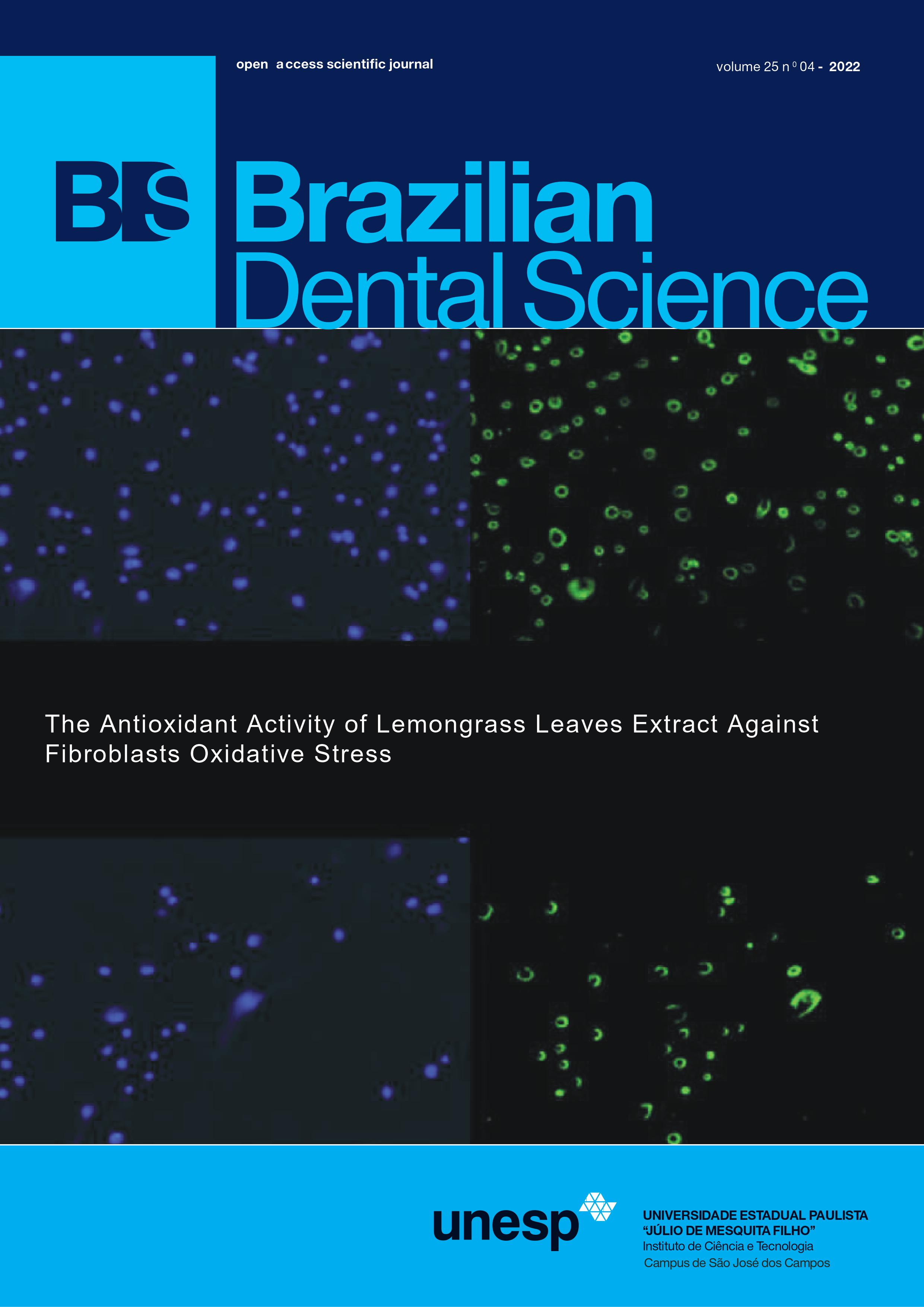Effect of prosthetic design and restorative material on the stress distribution of implant-supported 3-unit fixed partial dentures: 3D-FEA
DOI:
https://doi.org/10.4322/bds.2022.e3523Resumo
Objective: Evaluate the effect of Implant prosthetic designs and restorative material on the stress concentration
of 3-unit implant-supported restoration with two restorative materials. Material and Methods: Six different
screw-retained prostheses models were virtually designed and divided according to design: fixed bridge (FB),
cantilever bridge (CB), and separate crowns (SC). Then, each model was also divided into two subgroups
according to the material: Ultra-translucent multi-layered zirconia (Kuraray Noritake Dental Inc., Japan); or a
combination of PEEK (Polyetheretherketone) framework (BioHPP, Bredent, GmbH & Co., KG, Germany) and
zirconia (ZR) crowns (ultra-translucent multi-layered zirconia, Kuraray Noritake Dental Inc., Japan). A vertical
load of 100 N was applied statically perpendicular to the central fossa of each crown. The von-Mises stress was
computed using Solidworks software (SolidWorks Corp, Massachusetts, USA), based on the physical parameters
of the materials. Results: FB showed the lowest von Mises stress values out of all 3 design models. Moreover,
the combination of PEEK and zirconia showed strain values smaller than full zirconia. The highest von Mises
stress value was recorded in CB with the zirconia subgroup at (1098 MPa) while the lowest von Mises stress
value was recorded in FB with combined PEEK and zirconia subgroup at (190 MPa). Conclusion: For three-unit
implant supported restorations, the use of PEEK framework and zirconia crowns was found to be more favorable
biomechanically regarding the prosthetic components, implant and bone stresses.
KEYWORDS
Biomechanics; Dental implants; Implant prosthetic designs; Finite element analysis; CAD/CAM.
Downloads
Downloads
Publicado
Como Citar
Edição
Seção
Licença
TRANSFERÊNCIA DE DIREITOS AUTORAIS E DECLARAÇÃO DE RESPONSABILIDADE
Toda a propriedade de direitos autorais do artigo "____________________________________________________________________" é transferido do autor(es) para a CIÊNCIA ODONTOLÓGICA BRASILEIRA, no caso do trabalho ser publicado. O artigo não foi publicado em outro lugar e não foi submetido simultaneamente para publicação em outra revista.
Vimos por meio deste, atestar que trabalho é original e não apresenta dados manipulados, fraude ou plágio. Fizemos contribuição científica significativa para o estudo e estamos cientes dos dados apresentados e de acordo com a versão final do artigo. Assumimos total responsabilidade pelos aspectos éticos do estudo.
Este texto deve ser impresso e assinado por todos os autores. A versão digitalizada deverá ser apresentada como arquivo suplementar durante o processo de submissão.




























